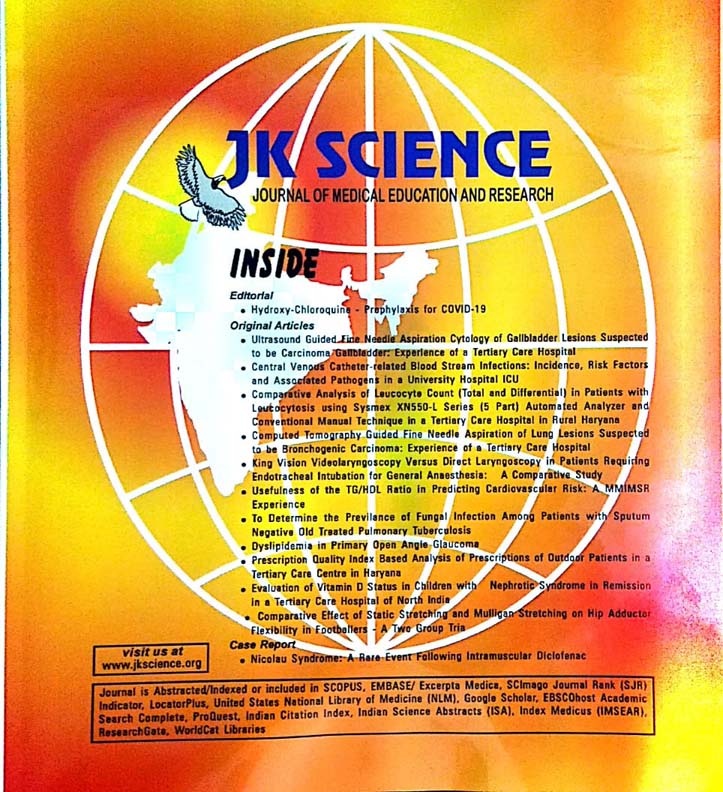Cutaneous Adverse Drug Reaction Profile in Tertiary Care Teaching institute: A Prospective Study
Keywords:
Cutaneous Adverse Drug Reactions, Antimicrobials, Exanthematous Drug EruptionAbstract
Introduction: Cutaneous adverse drug reactions (CADRs) are the most common type of drug sensitivity reactions, with a varied and diverse range of morphologies. Therefore, it is essential to be aware of them for diagnosis and prevention.
Aim: To assess the cutaneous adverse drug reaction (CADR) profile of patients from the tertiary care teaching hospital in North India.
Methods: A prospective, observational study was conducted over 6 months in the Department of Pharmacology & Therapeutics, Jammu in collaboration with the Dermatology department, SMGS Hospital, Jammu after obtaining permission from the institutional ethical committee. Patients with drug rash, of either sex and all age groups were included in the study. The WHO-UMC scale and Naranjo algorithm scale were used to determine the causality assessment. Details regarding drug intake, morphology of eruption, offending drugs, drug rechallenge/ dechallenge history, and treatment given to the patients were assessed.
Results: Out of 100 patients enrolled, 42% had an exanthematous drug eruption, while 21% had fixed drug eruptions. Most reactions were caused by antimicrobials 64% followed by non-steroidal anti-inflammatory drugs (NSAIDs) in 15% of patients, with 9% experiencing severe cutaneous adverse drug reactions (SCADRs), like Stevens- Johnson syndrome (SJS) and toxic epidermal necrolysis (TEN), caused by antituberculous drugs.
Conclusion: The study findings show that reporting adverse drug reactions (ADR) can help identify the drugs most commonly associated with dermatological reactions. This leads to better patient treatment through early identification and management of these reactions.
Downloads
Downloads
Published
How to Cite
Issue
Section
License
Copyright (c) 2024 JK Science: Journal of Medical Education & Research

This work is licensed under a Creative Commons Attribution-NonCommercial-ShareAlike 4.0 International License.





